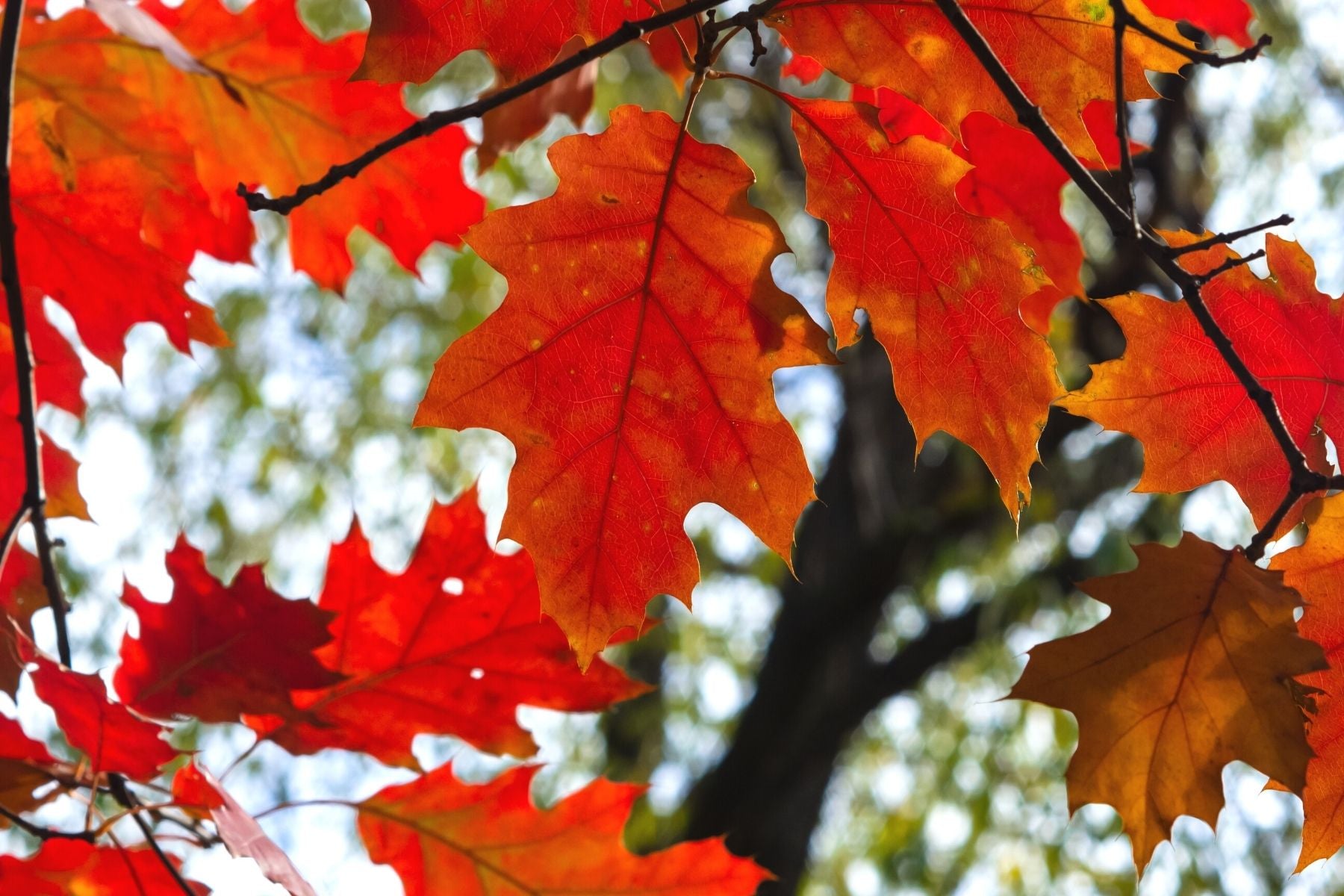If you ask anyone to name a tree off the top of their head, oak is likely to be one of the most common answers you’ll hear. Oak trees are fairly common in the United States, and we use them for a ton of different purposes. However, many people don’t know that oak trees aren’t all the same. In fact, oak includes a large assortment of different tree species that vary quite a bit from one another. The United States is home to over 60 distinct species of oak trees alone.
You don’t need to get extremely granular with oak tree species if you don’t want to. Oak species generally belong in one of two major categories: white oak trees and red oak trees. If you enjoy oak trees and want to consider them for your own yard or landscape, you should know what you’re getting into with both white and red oak trees. So what are the differences are between white oak vs. red oak trees? Get a better idea about which one is perfect for you with the following information.
White Oak Overview
The oak trees we classify into the white oak family are usually distinguishable by their size. White oak trees can grow into massive specimens if left to their own devices. They produce many acorns, which help feed a wide variety of animals. They also provide shelter for animals. The average white oak tree usually ends up somewhere around 80 feet in height and tends to be almost as big as its height in the total width of its branches.
White Oak Appearances
As you might guess, white oak trees have a lighter wood color than red oak varieties. The bark tends to be ashier in color, and you can also characterize a white oak tree by how rough its bark is. White oak tree bark has very deep ridges that many people find attractive for their yards. In contrast to their rough and coarse bark, white oak tree leaves don’t boast any sharp angles. The leaves instead have more rounded tips.
Pros of White Oak Trees
There are plenty of benefits to owning a white oak tree. Their massive size is a draw for lots of people who enjoy larger trees. Their sizes reflect their long lives as well. Many white oak species have extremely long lifespans and can survive for centuries as long as nothing terrible happens to them. Many people also prefer white oak trees because of their gorgeous coloring during the autumn months. In terms of care, white oaks are highly resistant to drought, and they also have a high resistance to rot and disease.
Cons of White Oak Trees
There aren’t too many cons to worry about with white oaks, but the ones that exist are worth going over. Buying a young white oak tree is perfectly fine, but it’ll grow very slowly as a reflection of its extensive lifespan. You may not see your oak tree fully grown in your life if you buy it when it’s still a sapling. More mature white oaks’ imposing sizes can also make them a hassle to transplant should the need ever arise.
Red Oak Overview
When you compare them to white oak trees, red oak trees aren’t quite as towering in size. They certainly still make a statement, as they can grow up to about 75 feet. However, many usually finish growing around 60 feet instead. Also, their branches don’t stretch as far out laterally, giving them a skinnier and leaner appearance. Red oaks can survive quite well in different soil types, even highly compacted soil. They also help feed and provide adequate shelter for critters of all shapes and sizes.
Red Oak Appearances
The appearance of a red oak is almost completely opposite to that of a white oak tree. Red oak trees tend to be much darker in coloration. The bark on a red oak is also much smoother than its white oak counterparts, with very few deep ridges to find at all. As the name suggests, it isn’t rare to see a deep red tint in many of the species’ woods. Furthermore, red oak trees have much pointier ends on their leaves compared to the rounded edges of the white oak leaves.
Pros of Red Oak Trees
If you want an oak tree that you can watch quickly grow, you’ll prefer a red oak without a doubt. These trees can gain more than two feet in a year. While you won’t get as large of variety of colors in their leaves during the autumn months, red oak leaves do turn a very attractive shade of red before they fall. Additionally, red oaks can stave off the effects of many sources of pollution, and they’re much easier to transplant somewhere else when compared to white oaks.
Cons of Red Oak Trees
Some people may consider the smaller size of a red oak to be a con that they can’t budge on. In the eyes of many individuals, they aren’t quite as majestic as fully grown white oaks. Getting the right amount of water for a red oak can also be more of a balancing act than it is for a white oak tree.
Major Differences Between White and Red Oak
Let reflect on the main differences between white and red oak now. These are the factors that will probably sway your choice.
- Leaf shape: White oaks have soft, rounded edges on their leaves, whereas red oaks have a more striking and pointy leaf shape.
- Size: White oaks grow to be much larger than red oaks. The former reaches up to 80 feet, while the latter rarely ever goes above 70 feet.
- Growth rate: White oaks grow much more slowly than red oak species. Red oaks can grow multiple feet in a single year.
- Bark texture: White oak trees have bark that features a much rougher texture than red oak trees.
Now you have a better idea of the differences between white oak and red oak trees. Therefore, you can make a better decision when you find oak trees for sale. Plant Me Green provides customers with both types of oak trees. And we ensure that we only sell the highest quality trees in terms of health and longevity.




Comments
Some more differences, generally:
1. White oak acorns mature in 1 year, Red Oak acorns take 2 years to mature.
2. White oak lumber has closed cells, which is why whiskey (et al.) barrels are only made of white oak, and I believe only certain species of white oak. Red oak barrels will leak liquid, so they store things like hinges, nails, etc. I love to tell people on my Dendrology walks that red oaks can’t hold their liquor. Also, white oak, specifically LIVE OAK, gave the USS Constitution its nickname, “Old Ironsides”.